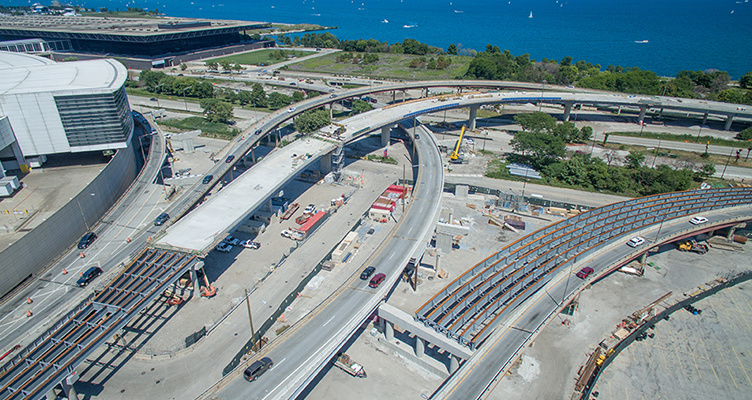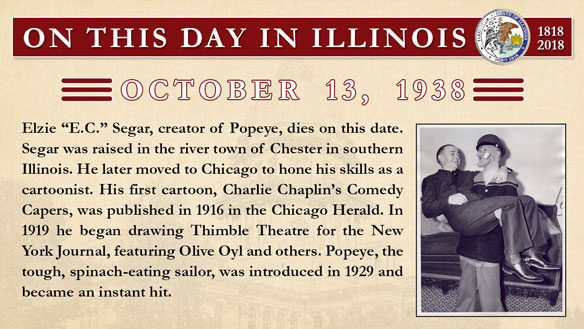Ninth annual Great Highwood Pumpkin festival will attempt to break World Record
- Details
 The city of Highwood will host its ninth annual Great Highwood Pumpkin Festival Friday through Sunday, Oct. 5-7, in downtown Highwood.
The city of Highwood will host its ninth annual Great Highwood Pumpkin Festival Friday through Sunday, Oct. 5-7, in downtown Highwood.
The three-day festival will include live music, a food court, three bars, pumpkin-pie eating and costume contest, carnival rides, a petting zoo, kids crafts, vendors and more.
Festival hours are 4-10 p.m. Friday, 9 a.m. to 10 p.m. Saturday, and 11 a.m. to 9 p.m. Sunday. Admission is $3 per day, per person or $5 for the weekend, which includes all-you-can-carve pumpkins.
On the evenings, the city will turn off the electricity in downtown Highwood for ten minutes to showcase thousands of lit jack-o’-lanterns.
Since 2010, the festival has attempted to break the Guinness World Record of 30,581 for the most pumpkins carved and lit at once.
In 2010, Highwood made its first attempt to break the Guinness record, ending up with 26,000 carved pumpkins. Last year, 21,243 jack-o’-lanterns were displayed on 30-foot tall scaffolding in front of city hall.
The Highwood Pumpkin Festival attracts an estimated 70,000 – 90,000 people every year and generated more than $60,000 last year, according to organizers. Money raised by the festival goes to Make-A-Wish Foundation.
For information, visit www.HighwoodPumpkinFest.com.
IDOT's I-55 and Lake Shore Project wins top award in national transporation competition
- Details
 The Illinois Department of Transportation (IDOT) has earned the Grand Prize in the 2018 America’s Transportation Awards, the top honor for state departments of transportation. The award was presented to IDOT at the American Association of State Highway Transportation Officials annual meeting in Atlanta this week.
The Illinois Department of Transportation (IDOT) has earned the Grand Prize in the 2018 America’s Transportation Awards, the top honor for state departments of transportation. The award was presented to IDOT at the American Association of State Highway Transportation Officials annual meeting in Atlanta this week.
IDOT’s Interstate 55-Lake Shore Drive interchange took the top prize in the “Best Use of Technology & Innovation, Medium Project,” prize for its use of a temporary bridge to accommodate inbound I-55 traffic to southbound Lake Shore Drive.
“We are proud to bring this award home to Illinois for the first time,” Illinois Transportation Secretary Randy Blankenhorn said in a press release. “The innovation that made this project stand out represents IDOT’s enthusiasm and commitment for creating and maintaining a safe and efficient transportation system for travelers statewide. Our employees strive to find creative solutions each and every day in everything they do to keep Illinois moving.”
The project saves the public countless hours of delays by avoiding extended closures and detours during the reconstruction. It also increases safety, reduces congestion and connects a major interstate and an urban expressway near some of Chicago’s most popular recreational and educational destinations, according to IDOT.
The 2018 competition attracted 79 project nominations from state departments of transportation in 35 states. An independent panel of industry judges selected the Grand Prize winner, while the project receiving the highest number of online votes earned the Socrata People's Choice Award.
The award also included a $10,000 cash prize for a local nonprofit organization, which IDOT will give to the Special Olympics.
Artist of the Month - Stanley Bly
- Details
 Stanley Bly is the September Artist of the Month. He lives in Springfield and creates artwork using oil paint on wood.
Stanley Bly is the September Artist of the Month. He lives in Springfield and creates artwork using oil paint on wood.
How long have you been an artist or when did you start? Was there a single incident or moment when you realized this was your passion and if so, tell us about it?
Like any cliché, I always knew I wanted to be an artist, ever since I was a kid. I graduated with my bachelors in art from the University of Illinois in Springfield, and it was through those studies I became interested in art history and poetry, two things that still affect the work I make today.
There was a single moment that made me the artist I am today, and that was when I was accepted into a show at the Illinois State Museum, the Pro-Text exhibition. From there I made friends with other like-minded artists who I still work and show with. They’re very talented people.
Illinois has been factored into your work in the past. What does being able to live and work in Illinois mean to you?
It’s where I grew up, it’s the landscape I know, and it’s really a much more diverse state in terms of people and landscape than people realize. For me to work here and be able to make paintings here is wonderful. I’m right in between many different metropolitan cities, all within a day’s driving distance. Plus, there isn’t a shortage of history to pull from.
What opportunities does Illinois present to local Illinois artists?
Well of course there are galleries, grants and business opportunities here. It’s just like anything, you have to search them out and work hard. Working hard doesn’t make it any easier, it just means that some of those opportunities start coming to you.
My daughter brought home a picture she drew one night to my studio, and I said, “Wow, that’s really great! Do you think you’d like to do something like this?” She said, “No way dad! I don’t want to work that hard!” I still laugh about that one to this day.
What do you like about Illinois?
I like the dynamic nature of this state. I can drive 20 minutes outside of Springfield and be around rolling hills. I can drive 3 and a half hours north and be surrounded by buildings so tall that I can lose which way west is. There is a large diverse group of different types of people from all walks of life and experiences that live here. Not every state changes in the seasons like we do either. Every trip is a little different.
 What is your favorite medium to work in?
What is your favorite medium to work in?
I like to paint in oil paints on wood. It originally was an homage to the Pre-Renaissance painters, before canvas came around, then I realized how the wood shimmered and that made it into something that somehow seemed more alive.
Where can people view or purchase your work?
My work can be viewed and purchased on my website, the Springfield Art Association Collective and through Artsy. You can also contact me though Instagram or through Facebook.
What artist inspires you and why?
Mark Tansey, a contemporary painter, changed my work the most. His work is funny, serious, introspective, and so well executed it makes you wonder why you paint. The concept of Tansey’s wheel even touches upon genres I don’t like, but Tansey pulled it off and did it in a way that is simple reverence.
John Waterhouse is also one of my favorite painters. His use of paint and the ability to take a scene and execute it in such a staged and beautifully poetic fashion is truly incredible. In fact, The Lady of Shallot is probably my favorite painting. It’s heart-wrenchingly beautiful.




